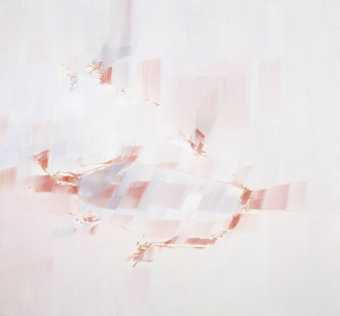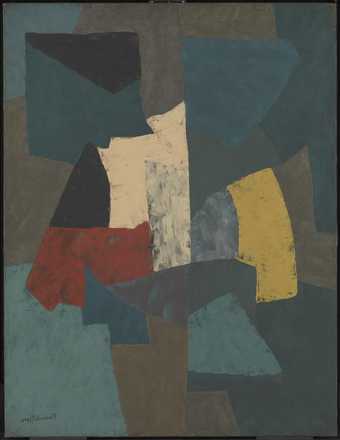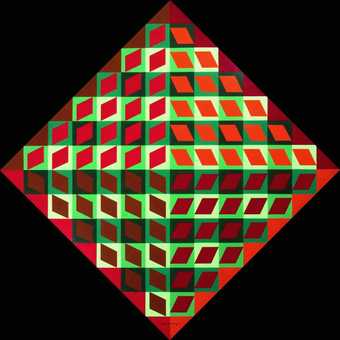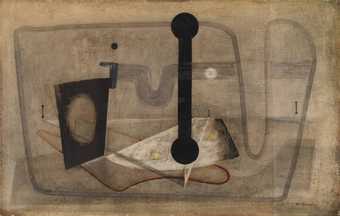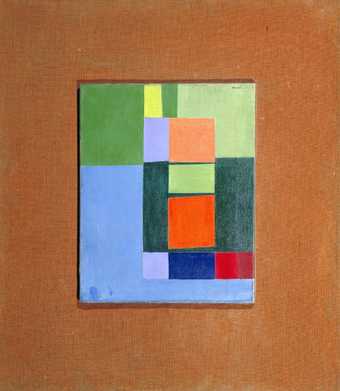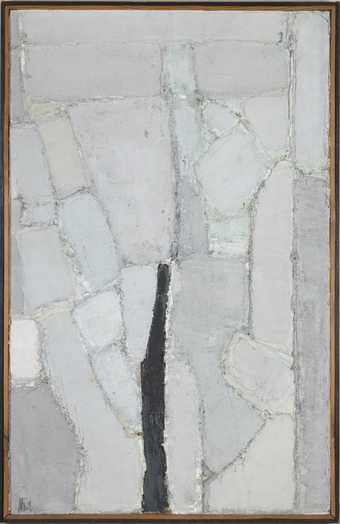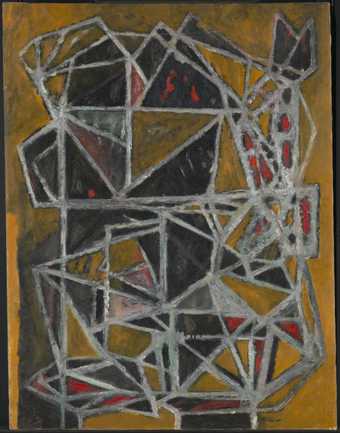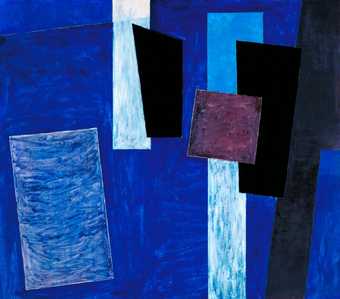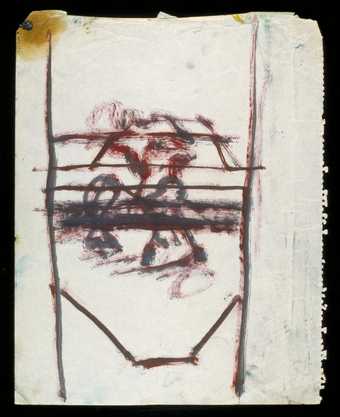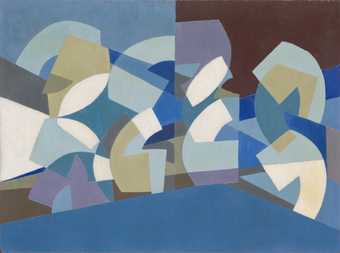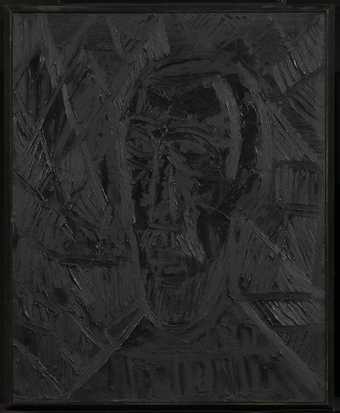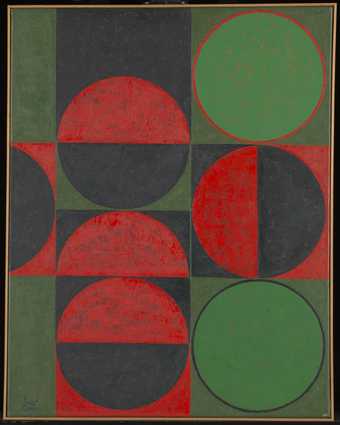
In Tate Modern
- Artist
- Shafic Abboud 1926–2004
- Medium
- Oil paint on hardboard
- Dimensions
- Support: 1460 × 1140 mm
- Collection
- Tate
- Acquisition
- Purchased with funds provided by the Middle East North Africa Acquisitions Committee 2014
- Reference
- T13976
Summary
Composition c.1957–8 is an abstract painting on hardboard. The support is characteristic of the artist, who regularly painted on similar panels. The composition is dynamic, conveying a sense of movement through its structure of abstracted, rectangular shapes, which were applied with a palette knife. The work exemplifies Abboud’s often relatively monochromatic tonal system, here using a range of blues and greys. The painting was created during the late 1950s when Abboud was based in Paris, the city in which he lived from 1947 to 1969. However, as in many of his artworks, Composition also evokes the landscape, light and colour of his native Lebanon, whose scenery and colours were an ongoing source of inspiration for him.
Having studied in Paris since 1947 and worked in the ateliers of Jean Metzinger, Othon Friesz, Fernand Léger and André Lhote, Abboud began by creating abstract compositions and figurative works using techniques that owe much to cubism. He went on to develop a distinctive style that continued to employ cubist elements, but with thick layers of paint that resulted in rough, densely worked surfaces. In Composition the lines and contours, and the almost sculptural structure of the painting, are suggestive of an aerial view of a rural landscape featuring fields. In his notebooks, the artist wrote: ‘It is very hard to explain, but I like pursuing the work up to the abstract picture without letting go of the real origin … It is possible, I have already done it’ (Shafic Abboud, ‘Notebook, 1996–2003’, unpublished, courtesy of the artist’s estate).
The different coloured shapes in this painting, although seemingly irregular, have their own internal order. Liberated from the rigidity of a grid structure, their forms tilt away from any centre, creating an effect of gentle motion. The palette of blues, greys, and lighter tones is typical of Abboud’s paintings from this period. Upon close inspection, the work is a force of painterly gestures. Thick paint, lines and colours play on the morphological possibilities of the primary material and create a formal language based on the perception of its detailed surface. The forms of Composition present a constant juxtaposition of brushstrokes and colour fields, an interacting system of richly coloured moments. Composition is an unusually large-scale work for Abboud and exemplifies his distinctive take on European informel painting of the 1950s, combining European, Arabic and traditional Byzantine influences.
Further reading
Shafic Abboud: Rétrospective: Peintures 1948–2003, exhibition catalogue, Institut du Monde Arabe, Paris 2011.
Pascale Le Thorel, Shafic Abboud, Milan 2015.
Vassilis Oikonomopoulos
July 2013
Does this text contain inaccurate information or language that you feel we should improve or change? We would like to hear from you.
Display caption
In Composition Abboud used thick paint, applied with a palette knife. The irregular grid gives the work a sense of movement. It is characteristic of his abstract work of the 1950s. At that time he was living in Paris, but the painting carries memories of the light and colours of Lebanon, where Abboud was born. There may even be the suggestion of an aerial view of rural landscape. He wrote: ‘I like pursuing the work up to the abstract picture without letting go of the real origin’.
Gallery label, June 2020
Does this text contain inaccurate information or language that you feel we should improve or change? We would like to hear from you.
Explore
- abstraction(8,615)
-
- non-representational(6,161)
-
- geometric(3,072)
- formal qualities(12,454)
You might like
-
Sergio Romiti Composition
1960 -
Serge Poliakoff Abstract Composition
1954 -
Victor Vasarely Banya
1964 -
John Tunnard Composition
1942 -
Kenneth Martin Composition
1949 -
Nicolas de Stael Composition 1950
1950 -
William Gear Composition
1949 -
Adrian Heath Composition, Blue, Black and Brown
1952 -
Francis Bacon Sketch [Composition]
c.1959–61 -
Judith Rothschild Untitled Composition
1945 -
Saloua Raouda Choucair Composition in Blue Module
1947–51 -
Anwar Jalal Shemza Composition with Number Six
1966 -
F.N. Souza Head of a Man
1965 -
Saloua Raouda Choucair Composition with Two Ovals
1951 -
Anwar Jalal Shemza Composition in Red and Green, Squares and Circles
1963

